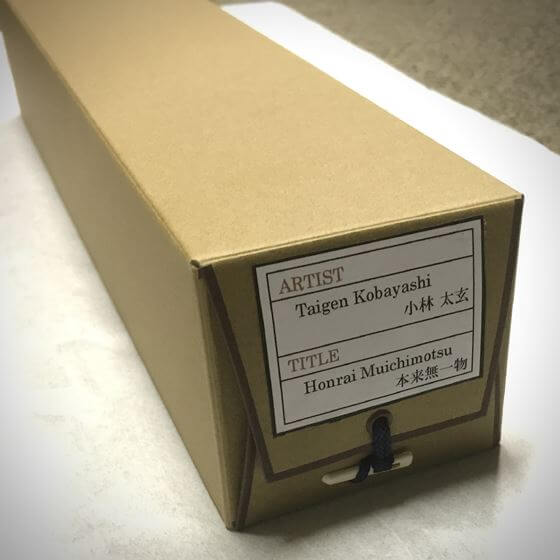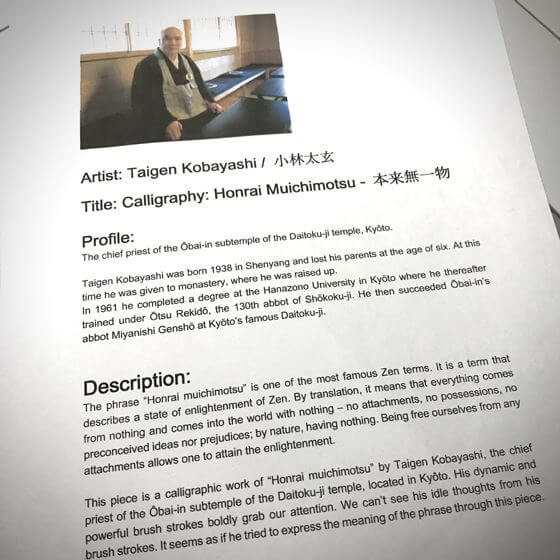Order from Austria for ” Honrai Muichimotsu ” Hanging Scroll by Taigen Kobayashi
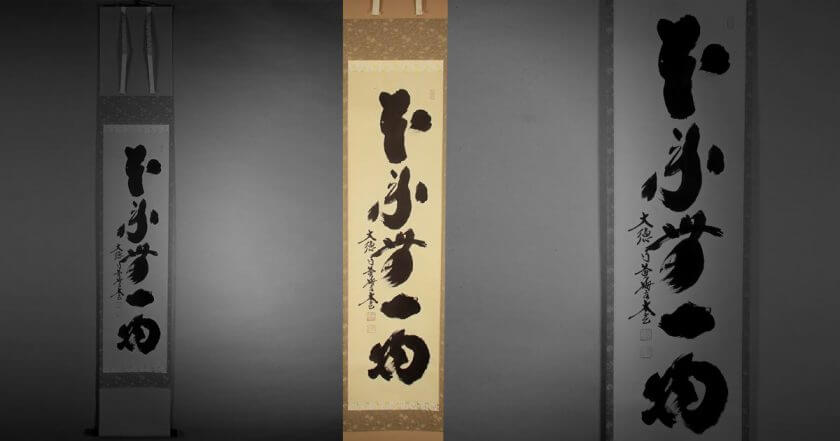
Inquiry from Austria
Austria, officially the Republic of Austria is a county in Central Europe. Austria was the birthplace of many famous composers such as Joseph Haydn, Franz Schubert, and Wolfgang Amadeus Mozart. Vienna, the federal capital and largest city of Austria, was for a long time an important centre of musical innovation. 18th- and 19th-century composers were drawn to the city due to the patronage of the Habsburgs, and made Vienna the European capital of classical music. The Vienna State Opera is considered one of the most important opera houses in the world. The opera concerts held in Austria is said to be four times more than Italy, which is another home of opera. Other famous composers such as Ludwig van Beethoven, Gustav Mahler, and Johannes Brahms performed mainly in Vienna too.
Today, we would like to talk about our recent business with an Austrian gentleman. He was looking for a nice birthday present for himself and found a perfect one on our website. He told us that his wife would buy it for him. We love their warm and open relationship! Well, please take a look at his choice of a hanging scroll.
Honrai Muichimotsu by Taigen Kobayashi
The hanging scroll with a Zen phrase is mounted in a Sou style called “Chagake”. Chagake means a hanging scroll (kakemono) for a tokonoma alcove in a tea room. Sen no Rikyū who created the tradition of wabi-cha liked Sou mounting style. Thin pillars and simple mounts are the characteristics of Chagake. Tea philosophy and Zen teaching are fully reflected in the style.
The calligraphy reads; “本来無一物/Honrai Mu Ichi Motsu” and stands for “We came into this world naked and when we die, we will be just as naked. Originally, there was nothing. A Zen reminder to free oneself from attachments.” Even most of us as Japanese do not know the meaning of “本来無一物” so his choice of the scroll was interesting and a bit of surprise.
Later on, the customer has kindly told us the background for choosing the calligraphy. He has been practicing as a student of a Roshi for more than 20 years. He always tries to remember these words which he takes for quite basic. This kakejiku helps him doing so.
We are very much touched by the reason. Thank you for sharing the story. We are so grateful to have met him through kakejiku and Zen.
Taigen Kobayashi Roshi(teacher) is perhaps the most notable Zen priest in Japanese chanoyu and calligraphy now.
He does his calligraphic works at one stroke. This makes his works powerful, vibrant and fascinating. The calligraphy of “ Honrai Muichimotsu 本来無一物” is well-balanced on Japanese paper.
We prepared a piece of artist information in English and put an English label on a paper box. The scroll is ready to be dispatched!
We left extra time for the shipment, to make sure it will get to the customer before his birthday. He told us that he would not be able to appreciate the content until the big day. After his birthday, he had kindly shared us the story of that special day as follows :
I had a really nice birthday, full of near friends and surprises such as a performance of the quire my daughter takes part and a two men Jazz combo. In the course of this, I unboxed the Kakajiku. It is a wonderful drawing. I am very happy with it. It will decorate my Tokonoma-like place.
What a great party! We can imagine the image of everyone smiling and having a great time together. Afterwards, we received some photos of the scroll in his house.
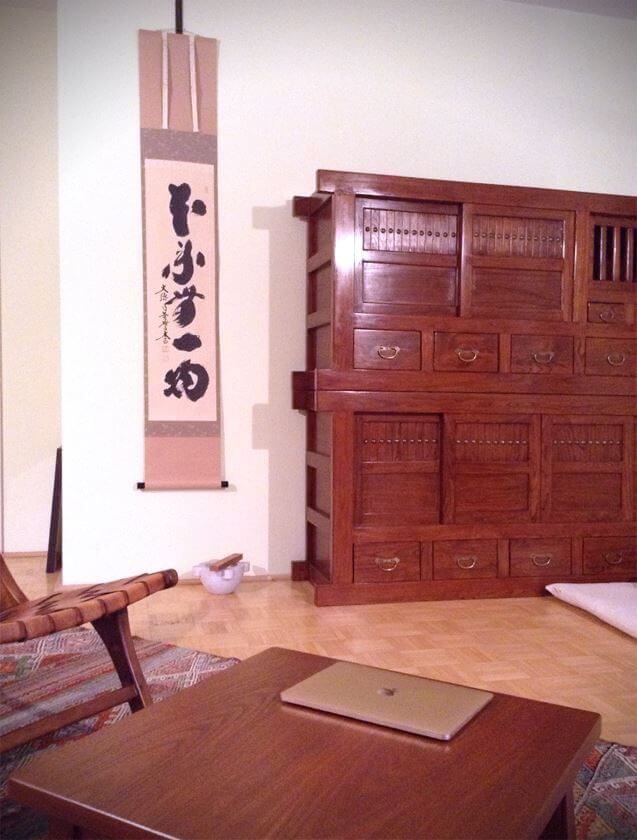
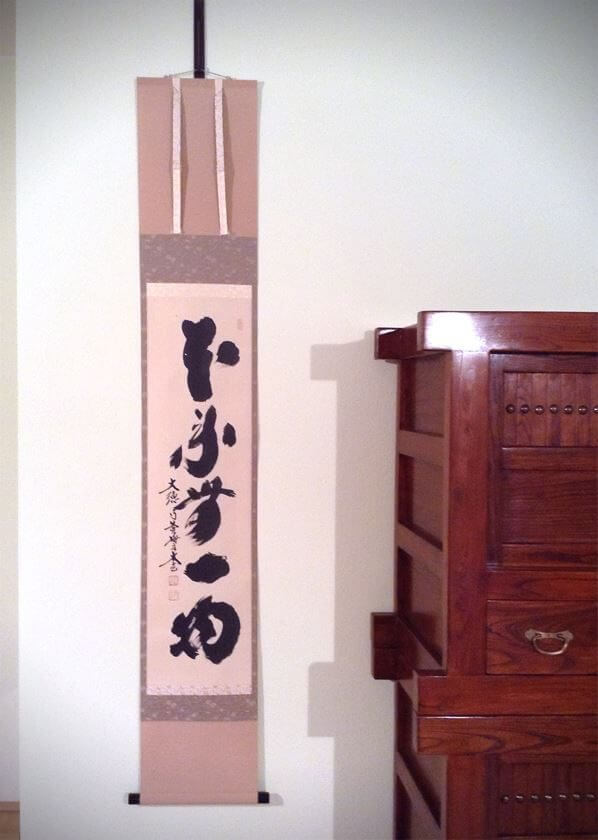
Wow. This is cool. We like this place. It’s really nice and done in good taste. In the home of our clients who live overseas, the scrolls are beautifully hanged sometimes in Japanese-like tokonoma, or sometimes elsewhere. It is always inspiring to see them because their ideas are original and innovative. Also, look at the Tansu/cabinet next to the scroll. This is a fine antique tansu! Nowadays, there aren’t very many Japanese people who own this kind of tansu in their home. Thank you for nice pictures.
We have many kakejiku/hanging scrolls on our website so take your time and have a look. For those items that do not have price, please do not hesitate to contact us through a contact form.


